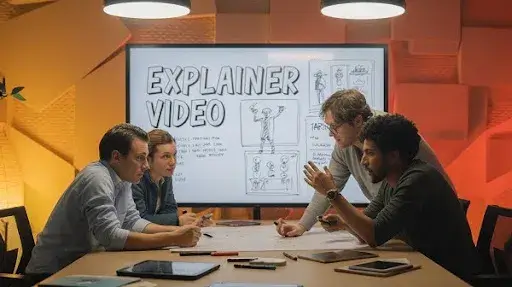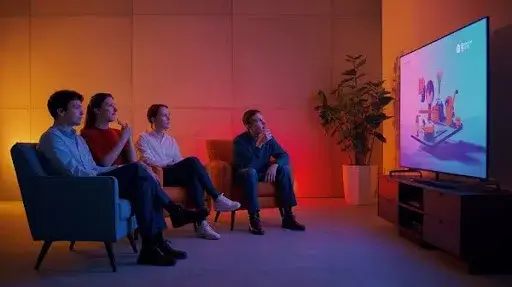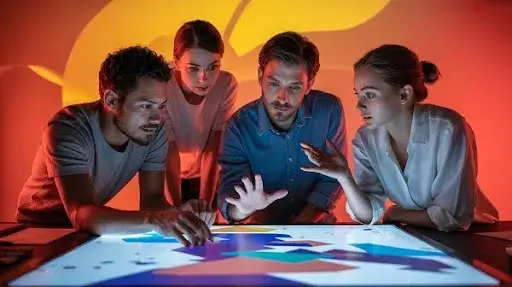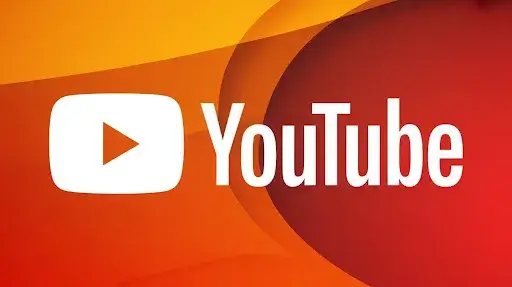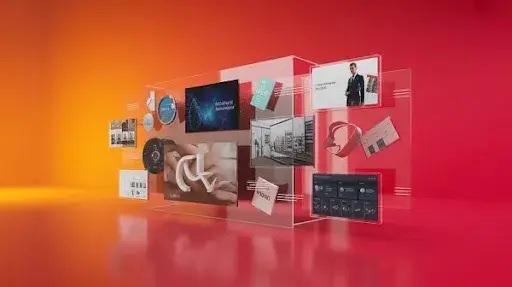Some products don’t need pages of copy to win you over. All it takes is a short clip—problem laid out, fix delivered, and a quick reason to care. That’s the power of an explainer video.
Brands lean on them because they respect your time. Instead of reading through a chunky webpage, you get the point in a couple of minutes. The visuals and the voiceover do the heavy lifting. No fluff. No second-guessing. Just clarity.
That’s why explainer videos have become a favorite tool for businesses that want attention fast—and don’t want to lose it.
What is an Explainer Video?
At its simplest, an explainer video is a short piece of content that breaks down an idea, product, or service. Most run under three minutes, though the good explainer videos often stay closer to two.
The formula isn’t complicated: show the problem, reveal the solution, and wrap up with a next step. Instead of drowning viewers in technical details, these videos focus on essentials. That’s what sparks curiosity and builds trust.
You’ll see them everywhere—on landing pages, YouTube, even crowdfunding pitches. Wherever attention spans are short, explainer videos feel like a fast-forward button for brand storytelling.
Key Elements of an Explainer Video
So, what separates a throwaway clip from a good explainer video? A few non-negotiables:
- Keep it short. Two minutes or less. Any longer and you’ll lose people.
- End with a clear call to action. Viewers should instantly know the next move—sign up, download, buy.
- Lead with the problem, then deliver the solution. That order keeps interest alive.
- Match the tone with the brand. A playful brand needs a playful video. A serious one can’t crack jokes through cartoon characters.
- Clean visuals and clear storytelling. Bad sound or cluttered graphics ruin trust on the spot. A polished video says the brand knows its stuff.
Miss any of these and you risk people clicking away in seconds.
The Core Structure Behind the Best Explainer Videos
Look closely and you’ll notice most successful explainer videos follow a simple frame:
- What – point out the problem.
- How – show how the product or service fixes it.
- Why – explain why the viewer should care, and why you’re the best option.
Plenty of videos nail the what and how. The why often gets skipped, and that’s where impact drops. Without giving people a reason to choose you, the video doesn’t stick. That’s why knowing your audience before writing the script is crucial.
Type of Explainer Video You Can Use
Not every business needs the same vibe. The type of explainer video you choose shapes the whole feel of the message.
Animated Explainer Videos
Animation is the most common pick. It’s flexible, cost-friendly, and easier to update than live shoots.
Popular styles of animated explainer video include:
- Infographic style – moving icons, charts, and stats that make data simple.
- Whiteboard or chalkboard style – a hand sketching while the narrator explains. Simple, but effective.
- Product simulation – screen recordings that show how a tool or app works.
- Character-driven animation – cartoon characters that mirror the audience’s problems.
- Motion graphics and 3D animation – polished visuals created by a 3D animation studio for a premium look.
Animated explainer videos work well when used in the educational format of an explainer video—teaching quickly without dragging.
Live Action Explainer Video
Here, real people step in. It could be a founder speaking directly to the audience or a presenter walking through a process. Done right, live action explainer videos feel personal and trustworthy. The trade-off is they demand more effort—planning, filming, editing.
Crowdfunding Explainer Video
For crowdfunding campaigns, explainer videos are non-negotiable. They outline why the project matters, how funds will be used, and what supporters get back. These videos often combine live-action footage with animation to keep things engaging. Since they carry more details, they usually run longer than standard clips—but when done well, they can make or break a campaign.
Why Animated Explainer Videos Dominate
After viewing an animated promotional video, 45% of consumers are more inclined to make a purchase.
Animated videos still lead the pack. They cost less than live shoots, adapt easily to different messages, and can be refreshed without reshooting.
A 2D animation company can build simple, approachable content. A 3D animation studio adds polish and depth for brands aiming at a high-end feel. Both have their place.
The trick is balance. The animation should support the story, not overpower it. Even the glossiest video falls flat if it leaves people confused.
Making Your Own Explainer Video
Creating your own explainer video looks overwhelming at first. Breaking it into steps makes it doable.
Pre-Production
The planning phase: script, storyboard, style choice. You’ll also decide if you’ll work in-house, hire a 2D animation company, or bring in a 3D animation studio. Everything depends on the script. If that fails, the rest won’t save it.
Production
For animation, this is when characters and visuals are built. For live action, it’s when cameras roll.
Post-Production
Editing, sound, transitions—this is where it all comes together. The final polish defines the personality of the video.
Sure, you could try doing it all solo. But most brands discover it eats up weeks and still looks amateur. Specialists usually deliver stronger results with less stress.
Good Explainer Videos Always Start With Scriptwriting
Whatever type of explainer video you pick, the script decides how it lands. The best explainer videos squeeze value out of every second.
A strong script should:
- Hook viewers in the first 10 seconds.
- Present the problem clearly.
- Show the solution quickly.
- Close with a direct call to action.
Think of it like your elevator pitch in video form. Without that structure, even the slickest animation or the priciest live shoot misses the mark.
Why Good Explainer Videos Drive Real Results
Animated explainer videos generally increase conversion rates by roughly 20%. People scroll fast, skip faster, and rarely finish long blocks of text. Yet give them a short clip that explains something clearly, and they’ll stick around. That’s the real strength of a good explainer video—it doesn’t just hold attention, it guides people all the way to the final call to action.
The best explainer videos don’t act like pushy ads. They feel like someone walking you through a problem and showing you an easier way out. No bragging. No long speeches. Just help delivered in a format that feels easy to follow. That’s why you’ll find them everywhere—from SaaS products explaining a feature update to a local business showing how their service works.
The Psychology Behind Explainer Videos
Why do animated explainer video services work so well? It comes down to how our brains are wired. People remember visuals better than plain text. Add a voiceover, and suddenly the message becomes sticky. It’s the mix of sight and sound that boosts recall.
Then comes storytelling. When the video lays out a problem we recognize, we can’t help but pay attention. When it shows the solution, we link that moment with a sense of relief. That emotional tie makes the brand easier to trust.
Key Benefits of Using Explainer Videos
Businesses keep leaning on explainer videos for a handful of simple reasons:
- Complicated ideas get stripped down to the essentials.
- Decisions happen faster because viewers don’t have to process pages of copy.
- Engagement rates jump compared to static posts.
- Conversions climb when there’s a clear call to action.
- One video can live on your website, in ads, emails, or even presentations.
So a single piece of content ends up pulling weight across multiple channels. That’s why brands of every size—from startups to big players—consider them worth the spend.
Type of Explainer Video and Where They Shine
By now, you know the big three: animated explainer videos, live action explainer videos, and crowdfunding explainer videos. But it helps to see how each gets used.
- Tech startups usually lean on animation. Products change quickly, and animated formats are easier to update. A 2D animation company might design simple, approachable visuals, while a 3D animation studio adds polish when the brand wants a premium feel.
- Service-based businesses often choose live-action explainer videos. A consultant or attorney speaking directly to the camera gives a sense of credibility that animation can’t.
- Crowdfunding campaigns mix it up. A blend of live-action footage and animated graphics helps tell the story in a way that feels both personal and engaging.
Every type of explainer video has its own strengths. The right choice depends on what you’re explaining and the reaction you want people to have at the end.
Mistakes That Can Sink a Good Explainer Video
Plenty of explainer videos fail before they even get started. The biggest pitfalls look like this:
- Dragging on too long and losing the audience before the CTA arrives.
- A weak or confusing script that even slick animation can’t save.
- Poor audio quality—bad sound chases people away quicker than fuzzy visuals.
- A message that feels generic instead of tailored to the audience.
- Forgetting the next step—without a CTA, the video goes nowhere.
Each mistake does more than waste budget. It chips away at trust. And in most cases, viewers don’t give second chances.
The Educational Format of an Explainer Video
Not every explainer video is built to sell. Some are created to teach. The educational format of an explainer video shows up in product tutorials, onboarding clips, and even healthcare explainers.
Take a new app, for instance. Instead of handing users a manual, it shows them a quick video of how to set up their account. Or a medical company might break down a process using animation so patients understand it without confusion.
This format isn’t sales-heavy, but it still builds confidence. And confidence in a brand usually leads to action down the road. Animated explainer videos—especially whiteboard and character-driven formats—work well here because they make tricky topics feel simple.
Making Your Own Explainer Video vs Hiring Experts
Yes, it’s possible to make your own explainer video. Plenty of drag-and-drop tools promise quick results. For small projects, that’s fine. The problem is most DIY videos look… well, DIY.
That’s where professionals make a difference. A 2D animation company or a 3D animation studio handles everything from scriptwriting to sound design. They bring polish, flow, and consistency—the things that separate “just okay” videos from good explainer videos that get shared and remembered.
If the budget is tight, keep your DIY attempt short and clear. Focus on a solid script, clean audio, and simple visuals. That alone can carry a basic video much further than overcomplicated animation with a weak message.
How to Create Your Own Explainer Video: A Step-by-Step Approach
For anyone set on building their own, here’s a simple roadmap:
- Start with the script. Map out the problem. Figure out a solution. Take action. Keep it brief.
- Sketch a storyboard. Rough frames are enough to line up visuals with narration.
- Pick your style. Animated explainer video, live action explainer video, or a blend.
- Record voiceover. A clear, natural-sounding voice does more than fancy visuals.
- Edit and polish. Add music, transitions, and captions for accessibility.
Even with basic tools, the script and voiceover hold the most weight. If those work, the rest can be simple and still land well.
Why Prolific Studio Invests in Explainer Videos
At Prolific Studio, explainer videos aren’t just one of many services—they’re a core strength. Our team has helped brands cut through clutter with content that’s short, sharp, and persuasive.
We’ve produced animated explainer videos, live action explainers, and even crowdfunding explainer videos that raised real support for projects. No matter the format, the mission stays the same: simplify the message so it connects and converts.
Frequently Asked Questions
How long should a good explainer video be?
Most range from 60 to 120 seconds. Any longer, and attention drops.
What’s the most popular style of animated explainer video?
Whiteboard and 2D character-driven styles are the most common. Both are easy to follow and work across industries.
Do I always need a 3D animation studio?
Not really. A 2D animation company can cover most projects. 3D works best if you want a high-end, polished look.
Can I create my own explainer video without hiring anyone?
Yes. Tools exist to create your own explainer video, but professional help usually brings a stronger finish.
How do crowdfunding explainer videos help?
They build trust by showing why the project matters, how funds will be used, and what supporters will gain.
What are the key elements of an explainer video?
Short runtime, clear script, strong visuals, clean audio, and a direct call to action.
Final Words
Explainer videos cut through noise in a way text alone rarely can. In just a couple of minutes, they turn strangers into people who actually understand your offer—and often, into paying customers.
Animated explainer videos, live action explainers, and crowdfunding explainer videos all work, as long as they follow the simple structure: show the problem, deliver the solution, and close with the next step.
At Prolific Studio, one of the best animation studios in Reno, we create explainer videos that respect people’s time and spark real action. If you’re ready to replace confusion with clarity, this is the moment to start.



